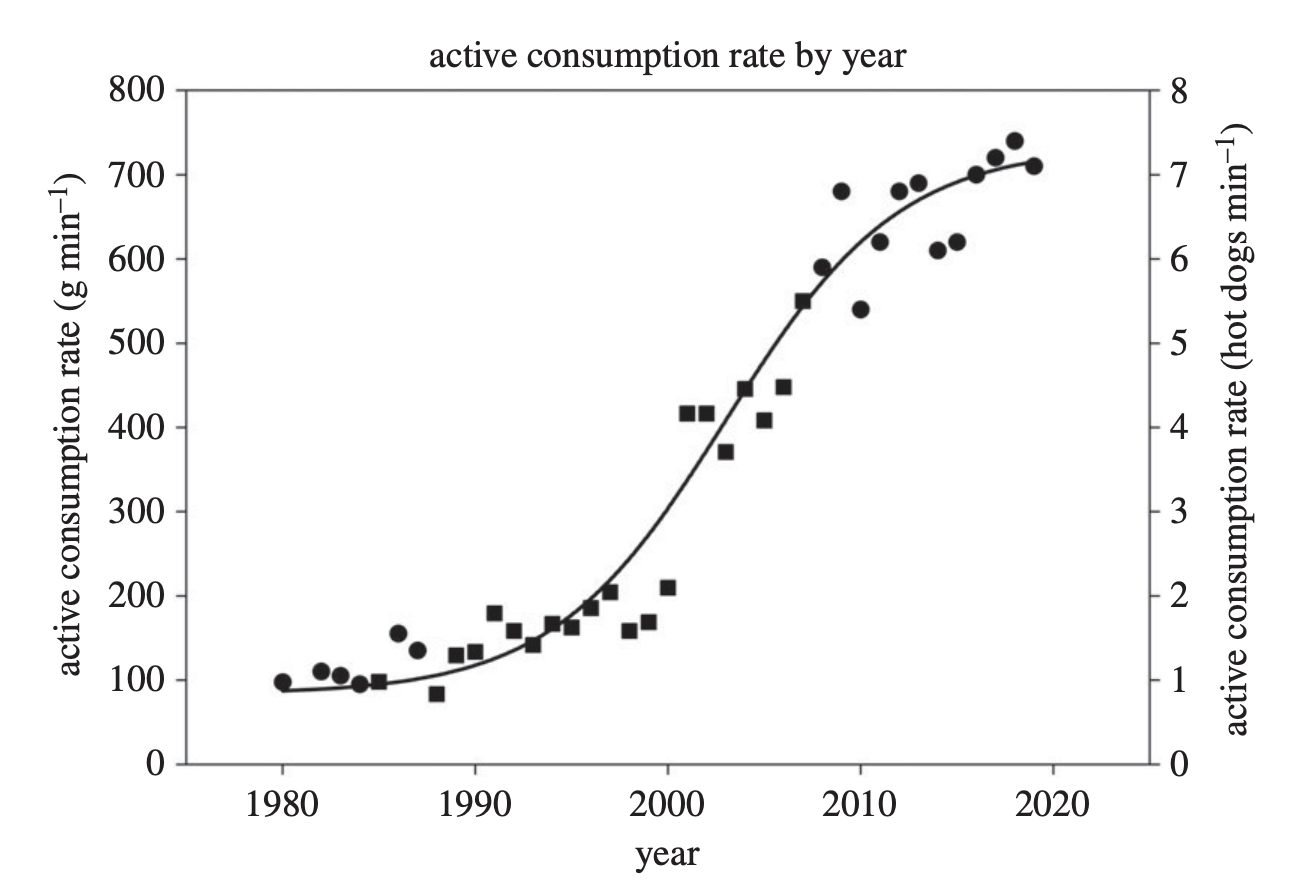Products You May Like
It’s human nature to test our physical limits, but some of us have taken that impulse to the extreme. Athletes spend huge chunks of their lives honing their bodies to swim the fastest or jump the furthest. And it turns out eating is no exception.
Nathan’s Famous Coney Island Hot Dog Eating contest is the ultimate battle of the belly, and its winners have come tantalisingly close to reaching the absolute limits of human gut performance, according to a new study.
Designed and conducted by physiologist and physiotherapist James Smoliga, the research shows these highly-trained ‘elite’ eaters are theoretically capable of swallowing 84 hot dogs in just 10 minutes.
Joey Chestnut currently holds the record at 75 hot dogs, bun and all, which he set this year in a socially distanced competition with plexiglass dividers.
While often considered an “entertaining spectacle of gluttony“, Smoliga, who works from High Point University in North Carolina, argues competitive hot dog eaters have made much greater headway over years than other athletes.
Drawing on 39 years worth of historical data from the contest’s website, Smoliga has used already-established models on gut plasticity to determine the absolute most hot dogs a human could possibly consume within 10 minutes.
His results show that today’s elite hot dog eaters are achieving an ‘active consumption rate’ (ACR) five times that of their largely ‘untrained’ predecessors in 1980 and many times that of the average person (who can only swallow about 10 hotdogs in 10 minutes).
This distribution of hot-dog eating creates a similar pattern to other athletic competitions, but the curve is more extreme.
“This starkly contrasts [with] marathon competitions, where the world record holder ‘only’ maintains approximately double the speed of average marathoners and is still not quite five-fold faster than an individual briskly walking the distance at 5 km/h,” Smoliga writes.
With more people joining Nathan’s competition and the introduction of specialised training techniques, Smoliga has uncovered “stunning plasticity” in the guts of competitors over the years.
 (Smoliga, Biology Letters, 2020)
(Smoliga, Biology Letters, 2020)
Above: Active consumption rate of the winner of the Nathan’s Famous Hot Dog Eating Contest by year, with circles representing 10-minute competitions and squares representing 12-minute competitions.
But there is a downside to all of this plasticity. The ability to rapidly ingest large quantities of food is one that requires training, but unlike many other sports, which tend to make us physically fitter, binge eating might actually induce physical dysfunction.
In 2005, for instance, Chestnut was only able to swallow 267 grams of hot dog per minute, whereas by 2018, he could swallow 740 grams in the same time.
This might very well be due to a decreased gastric emptying rate or extreme gastric dilation, which can severely reduce the contraction of muscles in the gut.
This plasticity might be useful in moderation, allowing carnivores to kill and eat prey exceeding their gut capacity on the odd occasion. But when binge-eating is practised regularly, it could lead to serious health issues, Smoglia says, although research on the long-term effects is limited.
“If chronic damage, rather than adaptation, is responsible for extreme gut capacity, this may explain why the progression of eating records exceeds that of athletic competitions,” Smoliga writes.
The Coney Island data has its gaps, of course – the time limits have changed over the years, the hot dogs themselves are not strictly regulated, and some years have no results – but this study hints at just how flexible the human body can be.
The study was published in Biology Letters.
